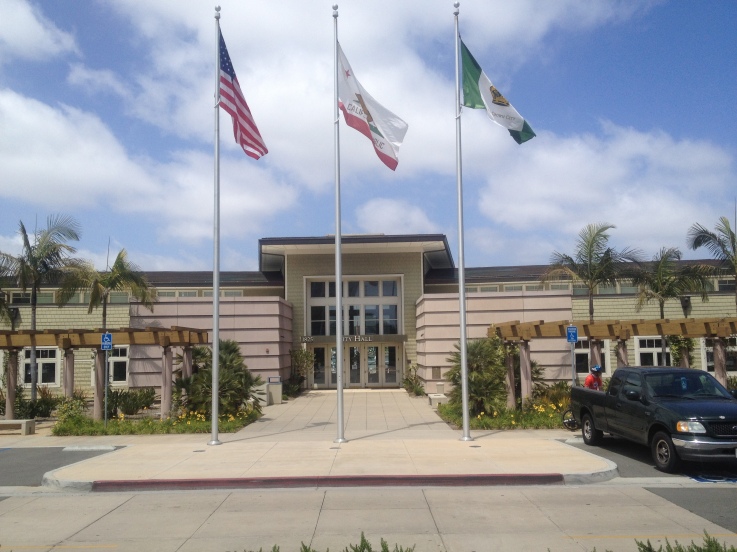Residential development and traffic are Coronado’s two biggest issues by far. People think that many new houses are too big for their lots and that there are too many cars racing through neighborhoods. Both topics dominate city council agendas. They are also often the two issues that determine who gets elected and who doesn’t, Mayor Casey Tanaka pointed out at the city council meeting where both subjects were discussed.
The City Council accepted all 25 of the residential design recommendations made by a subcommittee of the Residential Standards Improvement Program (RSIP-3) that it had appointed over two years ago to encourage people to build houses that reflect the surrounding neighborhood and to ensure privacy.
The vote was unanimous, despite an effort by Councilwoman Carrie Downey to have one more public workshop before voting on the recommendations, even though there are several more steps, including approval by the city’s Planning Commission and a second vote by the city council before any of the recommendations are enacted. The public can participate at each.
Downey, who has participated in all three RSIPs, fully understands the process. She just felt that these recommendations were so complex that another hearing was necessary, especially one that would encourage a dialogue — something she argued that was difficult, if not impossible, at a planning commission or city council meeting.
“I wanted the professional community that will be charged with implementing the new regulations to be able to interact with the designers of the rules to better understand how the future designs will change. Likewise, I wanted the city staff tasked with enforcing the rules to make sure there were no unintended consequences,” she wrote in an e-mail after the meeting.
In the end she was only able to convince Councilman Richard Bailey to continue the issue until a second workshop could be held.
Mayor Tanaka’s view that the public would have “many more bites at the apple” before any of these rules became law held sway.
The city council approved a $160,000 traffic study, despite strong objections from Bailey. The money will be used to write a pedestrian master plan and to update the city’s Bicycle Master Plan and its Safe Routes to School.
Both were approved five years ago and were due for a re-evaluation. Over half the cost of the study is being paid for by the San Diego Association of Government. The study will include an online survey and numerous public workshops and will be overseen by an advisory committee and the city’s Active Transportation Coordinator.
The idea is to get as much public input as possible, something critics charged did not happen when the council approved the Bicycle Master Plan and Safe Routes to School.
Bailey didn’t see a need for another study, “It seems like overkill.” He pointed out that the city already had a Bicycle Master Plan and the Safe Routes to School hadn’t hadn’t changed since it was established. Actually only a portion of the plan was enacted. The H Avenue route was eliminated because of objections by neighbors. Past studies have not considered pedestrian safety.
The primary goal of the traffic study is to make traveling around Coronado safer for everyone – drivers, bicyclists and pedestrians.
“We have an abysmal high incidence of bicycle accidents per miles traveled,” Councilman Mike Woiwode said. “It makes sense to me that we do all we can do to promote public safety.”
He also reminded the council that it “had trashed to bicycle master plan,” saying there had not been enough public input when the plan was approved five years ago.
In voting to abolish the master plan, the council promised that it would take a more comprehensive, more transparent approach. “This is what we said we would do,” Councilman Bill Sandke said. The vote was 4-1, with Bailey voting no.
The council also approved a three-month pilot public valet parking service at the intersection of Orange and B Avenues. The service will cost $5. To accommodate the service, three metered parking spaces on the north side of B Ave were converted to loading zones.
Tanaka’s request that the council discuss provisions for crossing guard services at a future meeting was also accepted.





